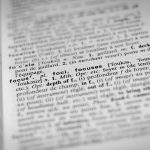Language is not merely a collection of words and sentences but a complex system of communication deeply intertwined with social, cultural, and historical contexts. Discourse analysis is a tool that helps us delve into this complexity by examining language use beyond the sentence level. In the realm of language learning, discourse analysis offers invaluable insights into how language works in different contexts and how it can be effectively taught and learned.
Exploring Discourse Analysis
Discourse analysis encompasses various strands, each offering a unique perspective on language. These include discourse analysis in the French tradition, critical discourse analysis, conversation analysis, forensic linguistics, mediated discourse analysis, and textual linguistics. These approaches view discourse from different angles, considering it as a product of social practices embedded in specific contexts.
The Evolution of Discourse Analysis
The roots of discourse analysis trace back to the intellectual landscapes of different regions. In France, it emerged in the 1960s and 1970s, influenced by structuralism and drawing from disciplines like linguistics, humanities, philosophy, and psychoanalysis. Meanwhile, in the Anglo-Saxon world, discourse analysis developed through studies of oral corpora, particularly in anthropology and sociology.
What are Key Concepts in Discourse Analysis
Regardless of geographical traditions, discourse analysis shares common principles. It views language as a product situated in context, connected with non-linguistic elements such as ideology and culture, and organized into stable forms like genres and interactional rules. Discourse analysts study diverse corpora, including political discourse, professional communication, intercultural interactions, and discourse related to gender and discrimination.
What are the Applications in Language Teaching
The integration of discourse analysis into language teaching stems from the communicative turn in the 1970s. Rather than focusing solely on grammar, language teaching aims to develop communicative competence. Discourse analysis informs language curriculum design by selecting relevant materials based on learners’ needs and contexts. It also aids in teaching languages for specific purposes by identifying linguistic features typical of various genres and activities.
How to Utilize Discourse Analysis in Language Classrooms
Language classrooms serve as fertile ground for applying discourse analysis. By observing teacher-student interactions, discourse analysts can uncover patterns in communication and teaching strategies. Analyzing teaching materials and texts about language teaching provides insights into the discourses prevalent in the field, benefiting teacher training programs.
Conclusion
Discourse analysis offers a multifaceted approach to understanding language and its use in different contexts. In language learning, it provides a lens through which educators can tailor teaching materials and methods to meet the diverse needs of learners. By incorporating discourse analysis into language teaching practices, educators can foster a deeper understanding of language as a dynamic tool for communication and interaction.








